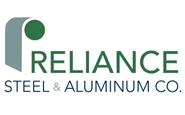Market Segment

February 16, 2017
Reliance Steel & Aluminum Sees Positive Market Environment
Written by Sandy Williams
Reliance Steel & Aluminum reported sales of $2.06 billion in fourth quarter, up 1.7 percent from fourth quarter 2015 and down 5.7 percent from Q3 2016. Tons sold at 1,365,000 were down 1.1 percent from Q4 2015 and down 5.6 percent from third quarter. Average selling price per ton sold was $1,500, essentially the same as third quarter and up 2.7 percent year over year. Net income $61.7 million compared to $68.6 million a year ago and $49.5 million in Q3 2016.
Reliance carbon steel sales for Q4 totaled 1,096,000 tons compared to 1,167,400 in Q3, a decline of 6.1 percent. Aluminum sales, at 83,300 tons, also declined in fourth quarter, down 4.6 percent.
Full year 2016 net income was $304.3 million declined 2.3 percent from the previous year. Full sales of $8.61 billion were down 7.9 percent. Tons sold for the year decreased 1.5 percent from 2015 and average selling price per ton was down 6.8 percent.
“Operationally, 2016 was a terrific year for Reliance as our focus on maximizing our gross profit margin resulted in our first ever annual gross profit margin above 30%,” said Gregg Mollins, President and Chief Executive Officer of Reliance. “Although somewhat improved from 2015, the macro environment for our industry continued to be challenging with overall lower demand levels and pricing volatility resulting in a sales decline of $737 million in 2016 compared to 2015, due mostly to lower metal pricing.
“The positive metals pricing environment experienced in the second quarter of 2016 lost momentum as we progressed into the second half of the year. However, the environment recovered as multiple price increases were announced by the mills in late 2016 and have continued into 2017. The trade cases filed by U.S. producers on various products throughout the year, along with production capacity discipline and price increases in raw materials, also continue to be supportive of domestic pricing. These factors have led to positive pricing momentum in early 2017. Customer sentiment is also more positive than we have seen in some time, which we believe will materialize into higher metals demand in 2017.”
CEO Greg Mollins noted that the Reliance customer base is also more positive today in regard to energy than they were 90 days ago.
“We’ve been seeing improved quoting activity and order flows. The order sizes have been much smaller,” said Mollins. “As the downturn in oil prices and drilling activity began toward the end of 2014, we proactively addressed the declines in this market through facility closures and asset write-downs at certain of our energy-related businesses and believe we are well positioned to participate in any recovery. With the incremental spending in both infrastructure and energy on the horizon, we expect overall metals demand in the U.S. to improve, which ultimately benefits Reliance.”
Jim Hoffman, COO, said demand remains very strong for carbon and aluminum in the automotive market. “The increased usage of aluminum in automotive has been the primary driver behind our growth activities,” he said.
The new Reliance facility in Monterrey, Mexico began operation in July 2016 to support automotive activity in the area and is running close to capacity. The Kentucky facility construction remains on schedule and is expected to be operational in mid-2017. The two facilities will be able to process both aluminum and steel.
Hoffman indicated sales continue to be weak in heavy industry but noted the company’s exposure is mostly to small and midsize agricultural equipment rather than larger equipment which has been impacted harder.
Opportunities appear to be on the horizon in the energy market. Although drilling activity remains low, rig counts are increasing and rising overall activity has created a more positive environment for energy customers.
“These encouraging signs of new activity lead us to believe that the bottom of this downturn is behind us,” said Hoffman. “Because of the proactive measures we took to right size our energy businesses during the downturn, we feel positioned to support new activity as drilling and rig counts continue to improve.”
Hoffman clarified during the earnings call Q&A that Reliance’s energy platform is mostly involved in products above the well head. Tubular pipeline products on the ground or in inventory are not a concern for the company.
“We are not into line pipe at all. So, we wouldn’t have anything to do with that,” said Hoffman. “Most of what we do in energy is in the completion end and maintenance and tools that are basically above the well head. So, the activity we’re seeing, just simply more activities, more quoting smaller orders, however more orders. So, the excess of pipeline around really doesn’t bother us at all.”
When asked about infrastructure expectations, Mollins said “everybody is optimistic” although project spending has not begun.
“It’s just a matter of the timing,” said Mollins. “And a lot of things are happening in Washington right now. It’s all really sounds great for steel business and Reliance. I think everybody anticipates spending, just a matter of when does it come. Does it come in 2017? That’d be great. I think that if you took a poll, most would say it’d be more into 2018, because of just the length of the time to plan these projects or what have you. But overall, it sounds very optimistic to us.”
Reliance has seen an increase in demand for road construction equipment which it attributes to the passage of the infrastructure bill in December 2015.
When asked to comment on Reliance’s industrial market exposure, CFO Karla Lewis said that it is difficult for the company to see where some of its products are being used. “Generally, we have somewhat limited visibility with where our product ends up because our customer base are a lot of more small machine shops, fabricators, we don’t always know where it’s going. But the high level we’ve always kind of said, we think about a third of our business is non-res construction which would include infrastructure and some related items. About a third, transportation which we would have the aerospace in there, rail car, truck trailers, those kinds of things. And then a third, general manufacturing which includes all those things that Jim just talked about. Energy would fall in there. Semiconductor, we usually have its decent piece. So, there is just a lot of different stuff in that broad kind of general manufacturing and a lot of it not big enough that we can specifically identify.”
Big River Steel has not been a big impact on the market yet, said Mollins. “Are we anticipating we will be seeing that shortly? Yes, we are.” ACERO Junction will also be coming into play as well. “I think probably the people that’ll see Big River first will be the tubular. That’s where I’d go if I were them.”
On the possibility of any new acquisitions in 2017, Mollins says the company is always looking at opportunities. “I’d have to say that really, we’re in the mood for a large acquisition, if it fits, anytime. I mean, our balance sheet at 30.3% debt-to-capital is solid as a rock. The availability of cash is certainly there and our appetite is there, it’s just a matter of when and if the deal that we looked at is appealing.”







